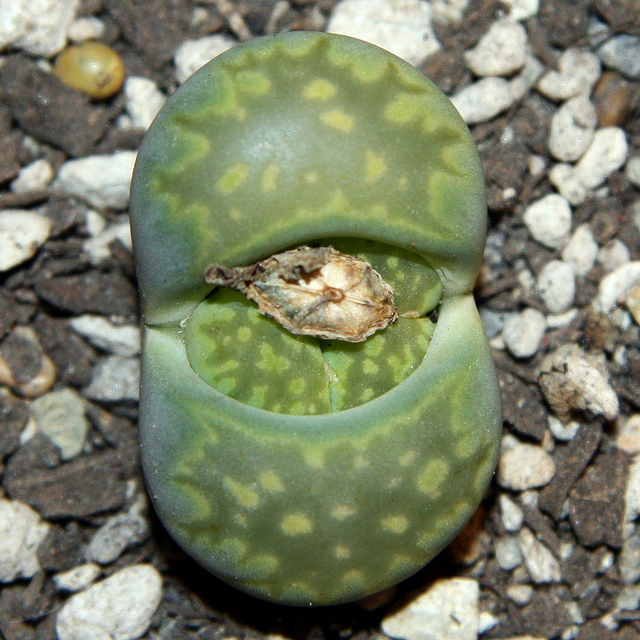Lithops julii ssp. fulleri 'Fullergreen' C056A - 20 seeds


Lithops julii ssp. fulleri 'Fullergreen' C056A - 20 seeds
Mix equal parts of potting mix and perlite. Moisten the mix with water, and fill a pot with drainage holes, up to about 1/2 inch from the top.
Sprinkle the seeds over the soil. Cover them with a 1/8-inch layer of fine sand or crushed rock. Do not cover with too much soil or the seeds may not germinate.
Fill a spray bottle with water and mist the soil with it. Try to keep the soil moist throughout the germination period. Cover the pot with plastic wrap or a glass pane to help the soil retain moisture.
Place the pot in a warm, sunlit area. Aim for a temperature of approximately 65 to 80 degrees Fahrenheit. Place a heating mat underneath the pot, if needed. Expect the seeds to germinate within about two to 12 weeks.
Remove the plastic wrap or glass pane once the seeds germinate. Transplant the seedlings to individual pots when the plants start to crowd each other and are big enough to handle, which is usually in a year. Place the pots in a sunny location.
Avoid overwatering the seedlings as they grow. Water them once the top 1/4-inch layer of soil is dry. After about three months, allow the soil to dry completely between watering .
Provide lithops with about five hours of sunlight per day.
Don't expect all the seed to germinate at the same time. Some seeds may take as long as a year to germinate
Once you get a handle on the basic requirements, growing them will quickly become an obsession.
Lithops grow well in shallow containers in a controlled climate environment such as a greenhouse.
The annual cycle of a lithops begins in late spring, when in response to moisture the existing leaf pair starts to increase in size. Depending on species, at some time between July and December in the northern hemisphere, a single flower bud will force its way through the fissure and open to a daisy-like flower that can be as large as the plant body and lasts for about a fortnight.
Lithops require a very bright and sunny position at all times, but during particularly warm summer periods this must be accompanied by good ventilation to prevent scorching. In common with most succulent plants, the stomata only open at night to allow absorption of carbon dioxide. This normally occurs below about 18oC, therefore also maintain plenty of ventilation at night during warm weather. In the wild, some species experience frost for short periods. However, in cultivation it is safer to keep them frost-free and most growers try to maintain a minimum temperature of 4 - 5oC in their greenhouses.
The summer watering is started when the new leaves are well developed and the old leaves more or less dried up; in United Kingdom greenhouses this tends be sometime during May. Pots are allowed almost to dry out before the next watering and the process is continued until October. During high summer, watering will usually be required at least once per week. Pots are kept completely dry through the winter until the next May, but growers in warmer climates such as California sometimes need to give a very small amount of water during this period. Occasional feeding with a low-nitrogen liquid fertiliser during the growing season is advantageous.
Lithops prefer a soil mixture that is made up of sandy gravel (e.g. 2 parts sand: 1 part clay loam: 1 part gravel). Add bone meal (phosphorus, like powdered dried chicken bones) and dolomitic lime (calcium, magnesium)
